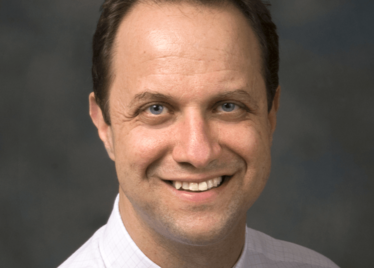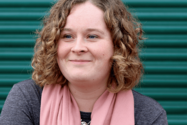Cracking Cancer’s Code
Sitting Down With… George Calin, Professor, Department of Experimental Therapeutics, and Co-Director, The RNA Interference and non-coding RNA Center, Division of Cancer Medicine, The University of Texas MD Anderson Cancer Center, USA.

How did you get into studying the role of RNA in cancer?
It was entirely down to chance. I was born in Romania, which at that time was a communist country. The study of genetics was frowned upon, but I was lucky to have the geneticist Dragos Stefanescu as a mentor; he taught me cytogenetics but also how to do good science. I wanted to study abroad, so I wrote 120 letters to 120 scientists all over the world – and ended up moving to Italy to Massimo Negrini’s laboratory, where I studied molecular biology and molecular genetics before moving to the United States. I was at Kimmel Cancer Center in Philadelphia with the famous geneticist Carlo Croce, when we discovered a link between microRNAs and human cancer. It was the first time a link had been made between any type of non-coding RNA (ncRNA) and a human disease. But the initial paper was rejected by a famous journal in just 12 hours. Attached was a simple note saying that our discovery was random, and because it wasn’t proven that microRNAs were important in cancer, our work would be better suited to a smaller journal. Today, that paper has probably been cited more than 4,000 times, and there are over 30,000 papers in PubMed on microRNAs or long ncRNAs and cancer. That discovery opened the door, both for me and for many other scientists. But much of it was actually luck.
In 1992, when I was a young student in Romania, the first scientist who helped me write a research essay was Thomas Cech, who received a Nobel Prize for his work with RNA and his discovery of ribozymes. It’s funny to think that now, 25 years later, I am working in the field that Thomas popularized: the role of RNAs in biology, and in pathology in general.
How did you find success as a translational researcher?
I don’t consider myself successful – yet. I don’t think I can consider my work successful until we see a drop in cancer mortality, either through an ncRNA therapeutic or through somehow targeting ncRNAs.
My collaborators and I have focused a lot of effort on developing microRNA therapeutics but, until now, we’ve only seen limited trials. I think the next 5–10 years will be a time in answering the question of whether these new types of drugs (or potentially drug targets) can be used in therapeutics, or for the development of biomarkers. Clever ideas are great, but we have to use them to deliver a meaningful change to the patient, either through better diagnoses or therapeutics.
Gleevec is a good example of the power of science and medicine working together to turn around the natural history of a deadly cancer. Chronic myeloid leukemia before Gleevec was fatal. Now, there are patients surviving for a very long time. And that’s what I hope to achieve using microRNAs or anti-microRNAs, whether in cancer or other diseases.
What advice would you give to other researchers aiming for the clinic?
That’s simple – never give up! If you’re a fundamental scientist, collaborate with clinicians, and clinician-scientists, and experts on drug delivery, statisticians, and bioinformaticians, because that’s how you get a strong team. You need a big team and you need to put in a lot of passionate work – several years, if not decades.
Also, you often need to work hard to find funding, because it’s always limited, as there are always more ideas than there is money to go around. Other than that, your path may be very different depending on your institution, and country, and so on. But I would urge all scientists to consider how they might be able to apply their discoveries to patients from the earlier phases of their research!
You aim to produce the first complete catalog of human ncRNAs. How close are you?
Day by day, I think I am getting further away! The genome is complex, and there have been many surprises. A colleague at Thomas Jefferson, Isidore Rigoutsos, and I recently had a paper accepted on the topic of human- and primate-specific ncRNAs that have no homology with other species. Essentially, these transcripts represent a fingerprint of humanity, which could have big implications for research – many scientists, including me, spend a lot of time and money using mouse models of human cancers. But as geneticists, we know that mouse models don’t reproduce human cancers very well. Without a deep and meticulous understanding of the genome, and how it functions, I don’t believe we will make big advances in developing new biomarkers and therapeutics for cancer. I hope our new ncRNA research will help to bridge that gap. We are heading in the right direction, but it’s going to take a long time. Luckily, the journey is fascinating and full of unexpected turns, which is great – it keeps life interesting!
When you look back at your career, would you do anything differently?
I don’t think there’s anything I would change. My path has led me to one of the biggest cancer centers in the world, where I’m lucky to have great collaborators and colleagues. But so much of my success is down to other people that I cannot thank them enough. It’s important to thank my mentors, because without them I wouldn’t be where I am. We should all thank our fellows more as well – no matter how clever you are, how good your ideas are, or how much funding you bring, you are in debt to the people in your lab who work to make your ideas a reality. So I’d like to thank both those who came before and those who came after for making my work possible.

I have an extensive academic background in the life sciences, having studied forensic biology and human medical genetics in my time at Strathclyde and Glasgow Universities. My research, data presentation and bioinformatics skills plus my ‘wet lab’ experience have been a superb grounding for my role as a deputy editor at Texere Publishing. The job allows me to utilize my hard-learned academic skills and experience in my current position within an exciting and contemporary publishing company.















